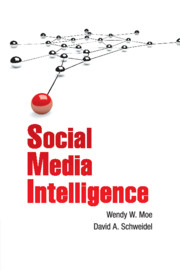Book contents
- Frontmatter
- Contents
- Preface
- Part I Foundations
- Part II Online Opinion or Online Noise
- Part III Conversational Trends
- Part IV Social Media Intelligence
- 7 Managing Social Media Communities for Better Social Media Intelligence
- 8 Cutting through the Online Chatter
- 9 Intelligence Integration
- 10 Building Social Media Intelligence into Our Strategies
- 11 Moving from Social Media Monitoring to Social Media Intelligence
- Index
- References
10 - Building Social Media Intelligence into Our Strategies
from Part IV - Social Media Intelligence
Published online by Cambridge University Press: 05 February 2014
- Frontmatter
- Contents
- Preface
- Part I Foundations
- Part II Online Opinion or Online Noise
- Part III Conversational Trends
- Part IV Social Media Intelligence
- 7 Managing Social Media Communities for Better Social Media Intelligence
- 8 Cutting through the Online Chatter
- 9 Intelligence Integration
- 10 Building Social Media Intelligence into Our Strategies
- 11 Moving from Social Media Monitoring to Social Media Intelligence
- Index
- References
Summary
A search of employment opportunities in social media inevitably turns up something like the following:
Social Media Associate: Act as administrator of the company blog and social media feeds as well as representing the company on all social media platforms. Create compelling content to drive traffic. Primary role is to engage community members.
In other words, the employer wants a communications associate whose main job is to tweet and blog.
Like many organizations, the employer represented here views social media as just another platform for advertising and communications. The person in charge of the social media efforts may be informed about the organization’s overall strategy, but his or her role is to simply use social media to communicate this strategy to the target consumer or constituency. This perspective on how social media fits into the organization can be very limiting and potentially problematic. Let’s break down the pitfalls associated with this line of reasoning.
- Type
- Chapter
- Information
- Social Media Intelligence , pp. 166 - 179Publisher: Cambridge University PressPrint publication year: 2014

